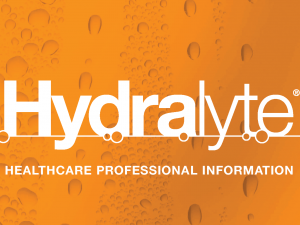Academic pharmacist Nataly Martini provides key information on Helicobacter pylori pathophysiology, diagnosis and evidence-based treatment strategies to enhance patient outcomes
Daily aspirin - yes or no?
Daily aspirin - yes or no?
| A world-first personalised benefit-harm calculator developed in Aotearoa New Zealand will help people decide, with their doctors, if they should take a daily aspirin as a preventative against heart disease and stroke. |
Thousands of New Zealanders take aspirin long-term to reduce their risk of cardiovascular disease (CVD). But the drug’s blood-thinning action carries its own risk: potentially fatal internal bleeding, a risk that varies from person to person.
For people who have already had a heart attack or stroke, aspirin’s protective benefit generally outweighs the bleeding risk. But until now, there has been no way of pinpointing whether the likely benefit outweighs the risk for patients who have not had a CVD event, but are at risk of one.
The study found that for this group of people, one in forty women and one in eight men were likely to have a net benefit from aspirin treatment for five years.
“There has been a lot of confusion about who should take it, so it is likely that some people are receiving aspirin when they shouldn’t be and others are not receiving it when they could potentially benefit from it,” says Dr Vanessa Selak, a senior lecturer in the Department of Epidemiology and Biostatistics in the University of Auckland’s School of Population Health.
Dr Selak and a team of researchers at the University’s Faculty of Medical and Health Sciences and Middlemore Hospital developed a benefit-harm calculator that shows whether the benefits outweigh the risks for individual patients.
It builds on personalised bleeding risk models that the team developed, published earlier this year. The models provide an estimate of a patient’s risk of a major bleed, which can be used to predict their extra bleed risk if they were to start taking aspirin.
The newly launched web-based calculator brings together the bleed risk estimate with an estimate of how many CVD events aspirin would likely prevent, giving a net benefit or harm for individuals.
To develop the calculator, researchers estimated the net effect of aspirin for 245,028 people aged 30-79 years without cardiovascular disease who had their CVD risk assessed between 2012 and 2016. They did this by anonymously linking data from PREDICT, a system used in New Zealand to predict patients’ CVD risk, to other health data.
Overall, if one heart attack or stroke was assumed equivalent to one major bleed (resulting in hospitalisation or death), 2.5 percent women and 12.1 percent men were likely to have a net benefit from aspirin treatment for five years. These figures increased to one in five (21 percent) for women and two in five (41 percent) for men when the equivalency was set at two major bleeds.
“Ultimately, it will be up to individual patients and their doctors whether they start on aspirin,” says Dr Selak. “But this calculator for the first time gives them a robust evidence-based estimate of the likely net effect, which will be a great help in making that decision.”
Risk factors for CVD and bleeds overlap. Participants with net benefits had a higher cardiovascular disease risk, higher levels of most established CVD risk factors, and lower bleeding-specific risk factors than net harm participants.
Researchers note that the study findings, published in the Annals of Internal Medicine, may not apply to populations outside New Zealand. The study was funded by the Health Research Council.




